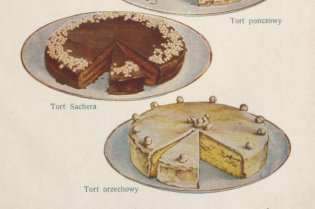Farynas – Krakow’s medieval street food
What did street food look like centuries ago? Maybe instead of looking for inspiration in Asia, it is time to come back to Krakow’s tried and tested ideas as to what to nibble - on the go...
Medieval and renaissance Krakow. Streets full of peddlers, street vendors, students rushing to college. Hundreds of cash-strapped people. But everyone needs to eat. This is where faryna vendors come to the rescue, described by Mikołaj Rej in "The Life of the Honest Man" back in the 16th century.
It appears that farynas operated in an unchanged form for centuries. "Faryna is the dregs - the very lowest grade of dining. Canteens have a fixed location whereas farynas are mobile, as if they were able to walk. All over Kleparz and Szczepański Square, women sat in front of makeshift stoves made of bricks or rooftiles, covered with pieces of flat metal under which a glowing fire heated pots and pans" - recalled Kazimierz Girtler. "People ate from clay bowls, without spoons, knives or forks, always ravenously and usually with booze" - adds Krygowski.
Besides sausages, head cheese and liver, faryna vendors had "black pudding with buckwheat", bigos, potatoes, groats, peas and celtuce from Czarna Wieś. Soups included: tripe, bone stock borscht, split pea soup, potatoe soup, barley soup and the cheapest of them all - Rumford's soup. The recipe for this soup was developed around the year 1800 by Benjamin Thompson, Count Rumford in response to the needs of Munich workers and soldiers.
Apparently the most popular faryna operated in the passageway behind the vicar's house from St. Mary's cemetery to Mały Rynek (Small Square) and was most renowned for the goose it served up in winter. Food in the Kleparz market was served in clay bowls. The specialities of Kleparz included: Tatar blood sausage with chopped fat trimmings, and a similar, but less fatty bloody head cheese with pieces of pig's ear and nose.
Nobody knows when farynas ceased to exist. Krygowski recalls that during his childhood (around 1915) there were some remnants of the old farynas at markets where vendors used a similar setup to serve pickled gherkins, boiled corn, and other snacks to be eaten at the stall.









